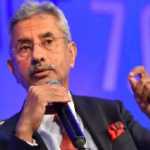The retail inflation rate for farm and rural workers eased to 6.17 per cent and 6.20 per cent, respectively, in July, a government statement said on Thursday. The retail inflation rates for farm and rural workers were 7.02 per cent and 7.04 per cent, respectively, in June this year, according to the Labour Ministry statement.
The All-India Consumer Price Index for Agricultural Labourers (CPI-AL) and for rural labourers (CPI-RL) registered an increase of 10 points each in July, reaching 1,290 and 1,302, respectively, the statement said. The CPI-AL and CPI-RL were 1,280 points and 1,292 points, respectively, in the same month last year.
According to the statement, year-on-year inflation rates based on CPI-AL and CPI-RL for July were recorded at 6.17 per cent and 6.20 per cent, compared to 7.43 per cent and 7.26 per cent in July 2023. The corresponding figures for June 2024 were 7.02 per cent for CPI-AL and 7.04 per cent for CPI-RL.
The ease in inflation for rural labour comes as a welcome sign as it leaves more money in the hands of the workers to improve their living standards. The easing in the rural inflation rate for rural labour is in line with the overall decline in India’s consumer price inflation which has slowed to a five-year low of 3.54 per cent in July this year, compared to the same month of the previous year, according to figures released by the Ministry of Statistics on August 12.
This is also the first time in five years that the inflation rate has fallen below the RBI’s medium-term target of 4 per cent. RBI Governor Shaktikanta Das has said that the RBI will go a rate cut to spur growth once the inflation rate shows a durable alignment with the 4 per cent target rate.
However, he said that the country’s inflation rate is expected to come down in the third quarter of the current financial year. He also said that domestic growth is resilient, supported by steady urban consumption.
The central bank’s monetary policy committee (MPC) determined that it is crucial for monetary policy to remain consistent while closely monitoring inflation, and emphasised maintaining a primary focus on controlling inflation to support sustained economic growth.



